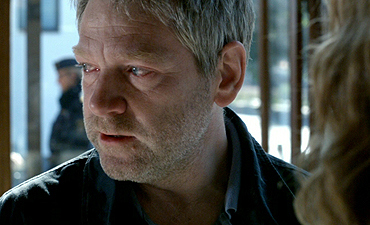Are you Wallander or Blomkvist?
Reading psychological thrillers is one of my ways to chill out. So it should come as no surprise that Scandinavian sagas such as the Millennium Trilogy and Wallander have provided inspiration for some of the reflections on burnout, and self-care that I am about to share with you today.
Burnout and disillusionment
Wallander: all work and no play
 Invented by the pen of Swedish author Henning Mankell, Kurt Wallander is an investigative cop. He works non-stop, and occasionally drinks too much. An article in the Guardian newspaper describes him as ‘a sad sack, a burnout and a bit of a loser […] indefatigable and relentless’, someone who ‘still clings to a vague belief in the virtue of police work, but he never looks as if he’s having fun’. His daughter encourages him to ‘have a life’ – she buys him a pair of running shoes hoping he’ll get fit again – and his girlfriend urges him to see a counselor. But Kurt is on a mission to eradicate injustice from the world, and has no time for time off. Truth be told, Wallander needs to refocus and find meaning beyond his disillusioned career. Counseling and jogging may help, but what he mainly needs is to stop and consider what really matters to his heart. At work, and beyond it.
Invented by the pen of Swedish author Henning Mankell, Kurt Wallander is an investigative cop. He works non-stop, and occasionally drinks too much. An article in the Guardian newspaper describes him as ‘a sad sack, a burnout and a bit of a loser […] indefatigable and relentless’, someone who ‘still clings to a vague belief in the virtue of police work, but he never looks as if he’s having fun’. His daughter encourages him to ‘have a life’ – she buys him a pair of running shoes hoping he’ll get fit again – and his girlfriend urges him to see a counselor. But Kurt is on a mission to eradicate injustice from the world, and has no time for time off. Truth be told, Wallander needs to refocus and find meaning beyond his disillusioned career. Counseling and jogging may help, but what he mainly needs is to stop and consider what really matters to his heart. At work, and beyond it.
Beyond the myth of work-life balance
Blomkvisk: one can fight injustices without becoming a martyr
Mikael Blomkvist is an investigative journalist and the male protagonist of the Millennium Trilogy created by Swedish writer Stieg Larsson. Like Wallander, Blomkvist is a workaholic, but far from being a ‘sad sack’, he has a joie de vivre which saves him. He has little time and interest in the idea of work-life balance. Stress is a given in his job. Nevertheless it does not seem that burnout is looming at the horizon for Blomkvist.
Could one of the reasons be that after many years on the frontline, he still finds his job meaningful and engaging, his ‘calling’ is still alive, his colleagues are supportive of him, and he actually manages, despite it all, to have his good share of fun at work and beyond? I think these elements are what gives Blomkvist resilience and strength. When life is all work and no play, when the office is a battlefield, when ‘a bad boss becomes more stressful than war’, and when disillusionment creeps in, burnout is the wise response of body and mind.
***
Burnout or the loss of meaning
Wallander and Blomkvist have invested their life in their work, fighting injustice and wanting to make a difference in society. They identify with their work, don’t fit a box, and place individuals’ human rights above power and bureaucracy. Similar to what many aid workers experience, their idealism is constantly being challenged by the tough reality of their work.
These two popular characters show how burnout is not simply a matter of working too much. As Wallander exemplifies, burnout is connected to having lost one’s sense of purpose and meaning, it is linked to disillusionment, and seeing one’s expectations shattered. It is a syndrome that is often nurtured by an organizational culture that champions personal sacrifice over care.
Aid workers burnout when the ideals that drove one into the profession are long gone, when energy and motivation are low, when there is a high sense of guilt for not doing enough. Often all this takes place in organisations that have done nothing to foster a culture of care and support for their staff.
Individuals burnout when life becomes a list of tasks that we have to perform, a list void of things that we want to do. We burnout when there is no room for emotions, no space for mourning and loss, no time for enjoying ourselves. We burnout when the gap between ideals and reality is too wide, and we remain stuck between the pull of what we imagined and idealised, and what is, unable to rethink – and if needed move away from – a lifestyle that we no longer want. When meaning and a sense of purpose are gone, it is very hard to enjoy one’s work, and help or lead others in any way.
Being active is a given in aid work, but how we are active makes all the difference. We can run on empty tank and end up being a ‘sad sack’ like Wallander. Or like Blomkvist we can decide to immerse ourselves in our calling without losing sight of ourselves, those we love, and the many other things that matter in life alongside work.
Burning out in the name of aid work is unlike to alleviate suffering, in fact it is bound to create more, if not in others, at least in ourselves.
***

